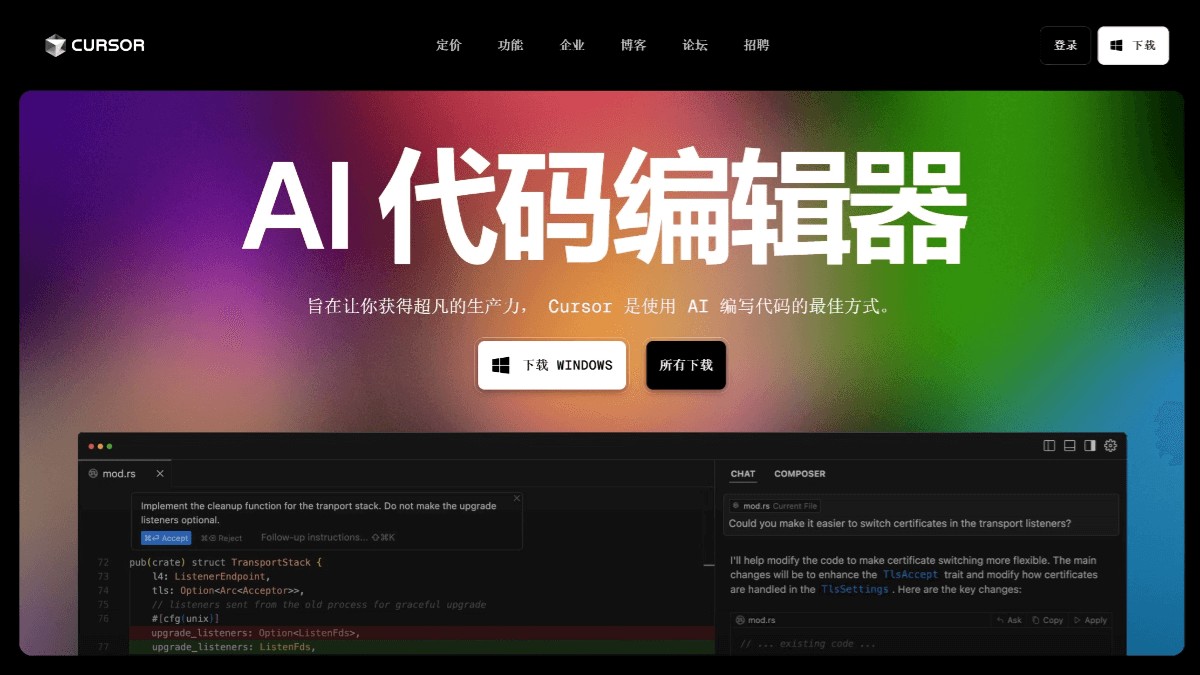
SD Forge is an optimization branch of Stable Diffusion WebUI, aiming to improve image generation speed and reduce video memory usage by improving code and introducing new technologies. One of the most significant features is the integration of SVD (Stable Video Diffusion) , which makes generating videos in WebUI more convenient. The following are detailed steps for generating SVD video using SD Forge.
Clone the repository:
If you have not installed Stable Diffusion WebUI, or want to install SD Forge, you first need to clone the SD Forge repository from GitHub. Execute the following commands in the command line or terminal:
git clone https://github.com/AUTOMATIC1111/stable-diffusion-webuicd stable-diffusion-webui git checkout forge
Install dependencies:
After entering the stable-diffusion-webui directory, execute the following command to install the required Python dependencies:
pip install -r requirements_versions.txt
Update existing WebUI:
If you have installed Stable Diffusion WebUI and want to switch to the Forge branch, please follow these steps:
Enter the stable-diffusion-webui directory.
Execute git pull to update the main repository.
Execute git checkout forge to switch to the Forge branch.
Rerun pip install -r requirements_versions.txt to ensure all dependencies are up to date.
You need to download the model file for SVD. Common SVD models can be found on Civitai or other model sharing platforms. After downloading, place the model file into stable-diffusion-webui/models/Stable-diffusion folder.
In the stable-diffusion-webui directory, use the following command to start WebUI:
For Linux/macOS :
./webui.sh
For Windows :
webui-user.bat
Switch to the SVD tab:
After launching the WebUI, you will see a new tab named "SVD". Click this tab to enter.
Select model:
In the SVD tab, select the SVD model you downloaded and placed in the models folder.
Set video parameters:
The SVD tab provides several key parameters to control video generation:
Video Frames: Determines the total number of frames in the video and affects the length of the video. The higher the number of frames, the longer the video and the longer it takes to generate.
Frames per second (FPS): Set the video playback smoothness, usually 24 or 30 FPS.
Motion Amplitude (Motion Bucket Id): Controls the amplitude of motion in the video. The smaller the value, the gentler the motion; the larger the value, the more intense the motion.
Seed: Used to control the randomness of generation. The same video can be generated using the same seed.
Prompt: Text prompt used to describe video content, which is the key to generating creative videos.
Negative prompt: Used to exclude elements that you do not want to appear in the video.
Write prompt words:
The writing of the prompt words is crucial. The more specific and clear the prompts, the better the resulting video will be. For example:
"A cat walking in a sunny garden, flowers, butterflies, realistic style" (A cat walking in a sunny garden, flowers, butterflies, realistic style)
"A spaceship flying through a nebula, colorful, sci-fi, cinematic lighting"
Generate video:
Click the "Generate" button to start generating the video. The length of the generation process depends on the hardware configuration and parameter settings.
The generated video files will be saved in the stable-diffusion-webui/outputs/svd directory. You can view and use the generated video in this directory.
Hardware requirements: Generating videos requires high computing resources. It is recommended to use a GPU with high video memory to improve generation efficiency.
Prompt word optimization: Learning how to write effective prompt words and using more descriptive words can significantly improve video quality.
Adjust the motion amplitude: Adjust the "Motion Bucket Id" as needed to control the motion amplitude in the video and find the appropriate value to ensure that the motion effect meets the needs.
Multiple attempts: Due to the random nature of the AI, it may take multiple attempts to get the desired results. Adjust seeds, prompt words, and parameters until you find the best combination.
Post-processing: The generated video can be imported into video editing software for further processing, such as adding background music, special effects, etc. to improve the video effect.
Compared with ComfyUI, SD Forge integrates SVD into WebUI, making video generation simpler and more intuitive. Without complex node connection and configuration, WebUI users can easily get started and the operation is more convenient.
SD Forge greatly simplifies the process of generating videos in Stable Diffusion, allowing more users to experience the power of SVD. Through the detailed steps in this article, you can easily get started and start creating your own creative videos. Once you master these techniques and keep trying and optimizing, you will be able to produce stunning, high-quality video works.



